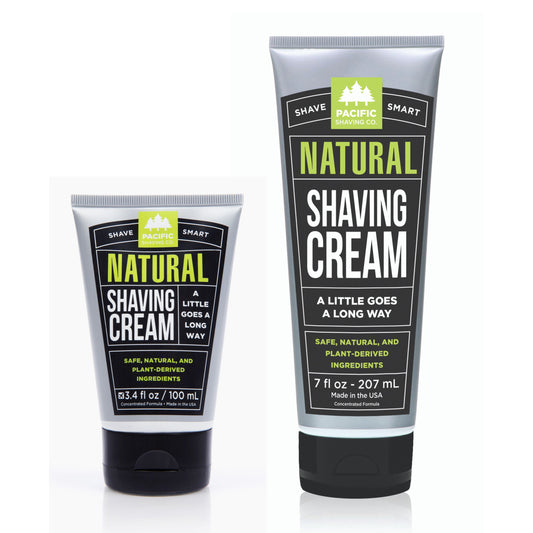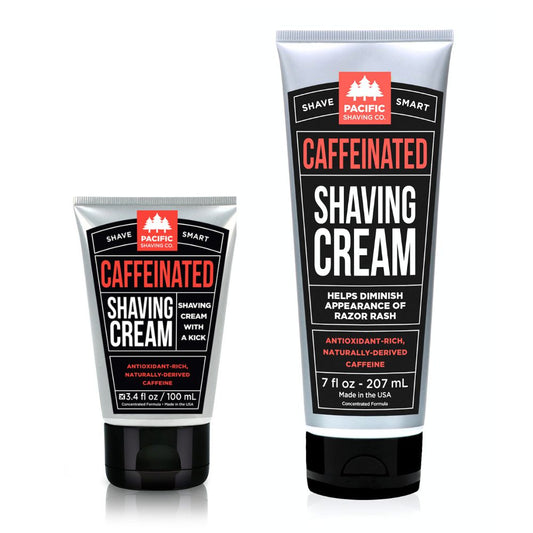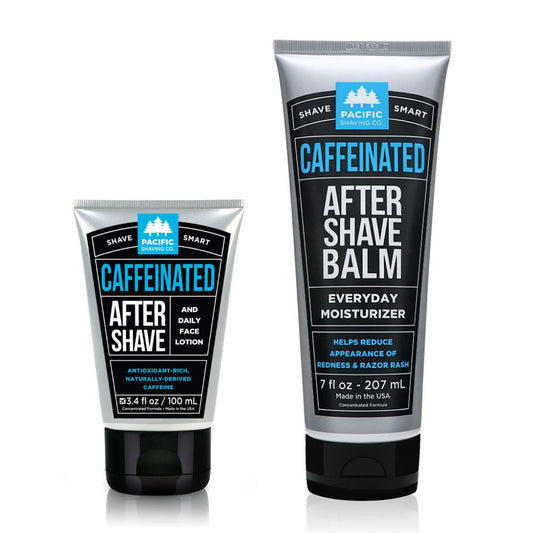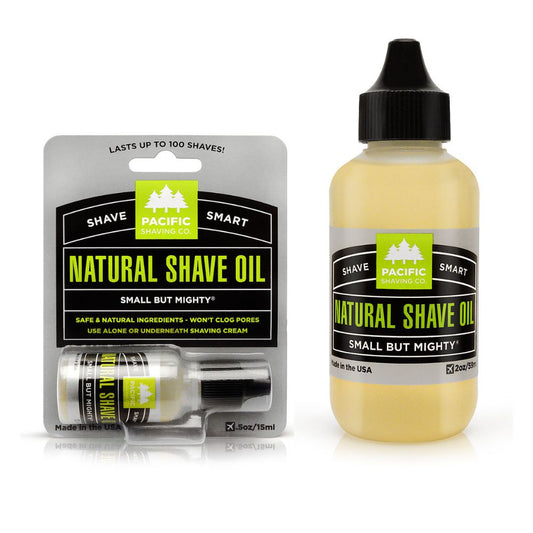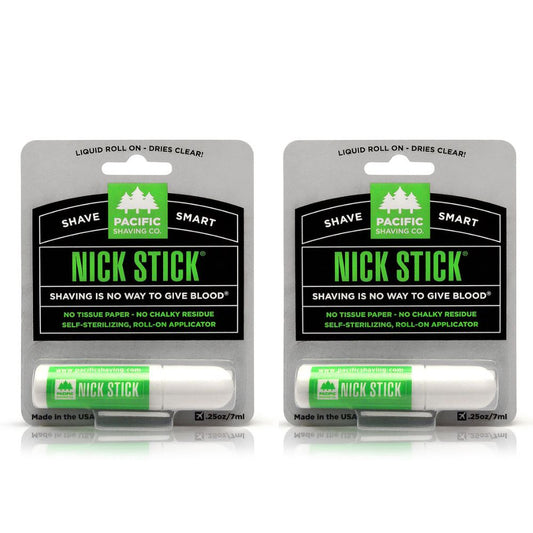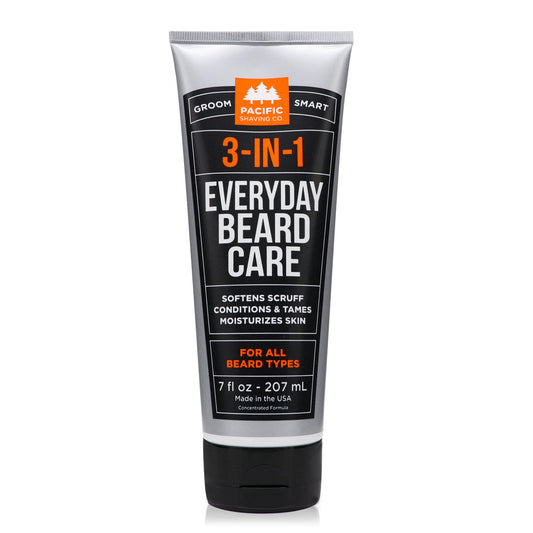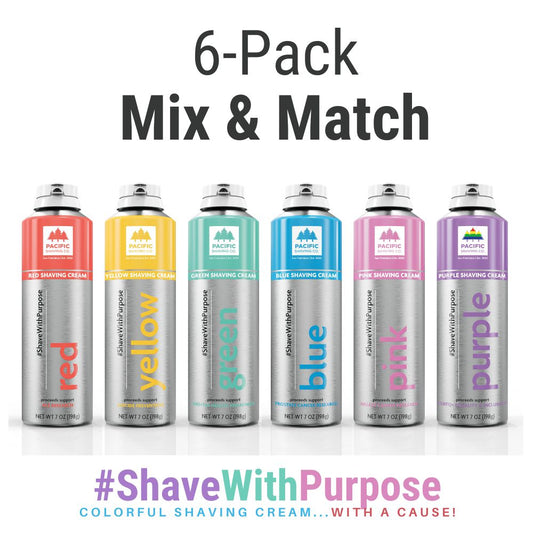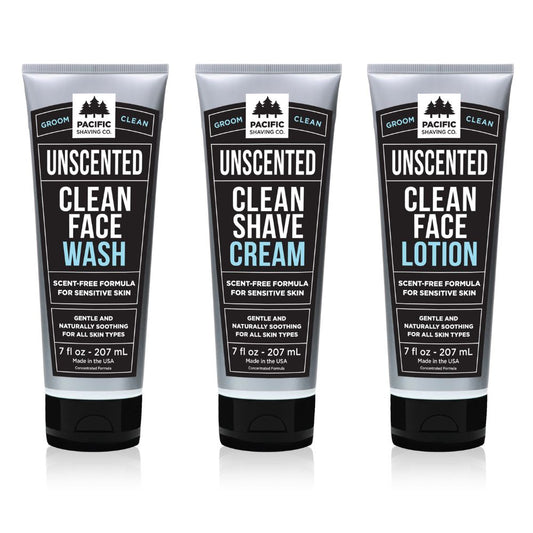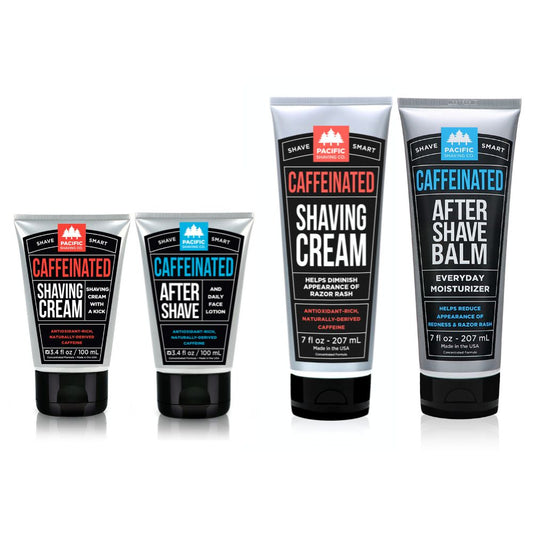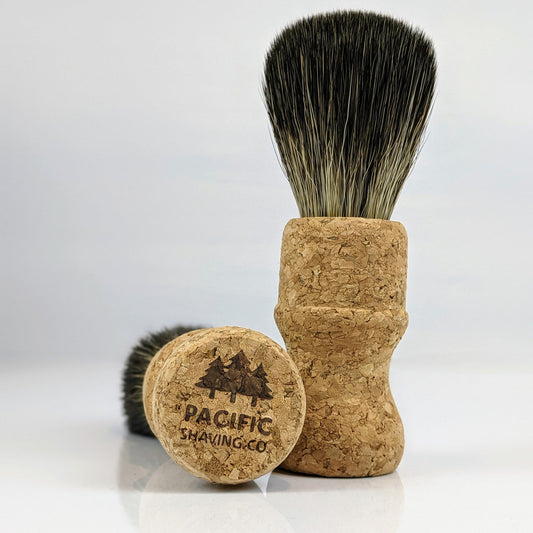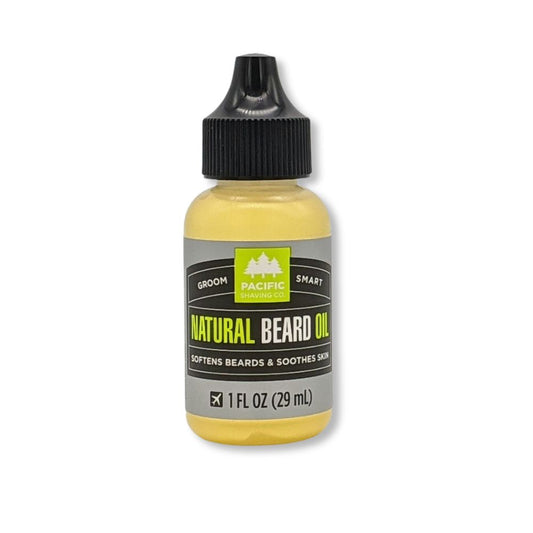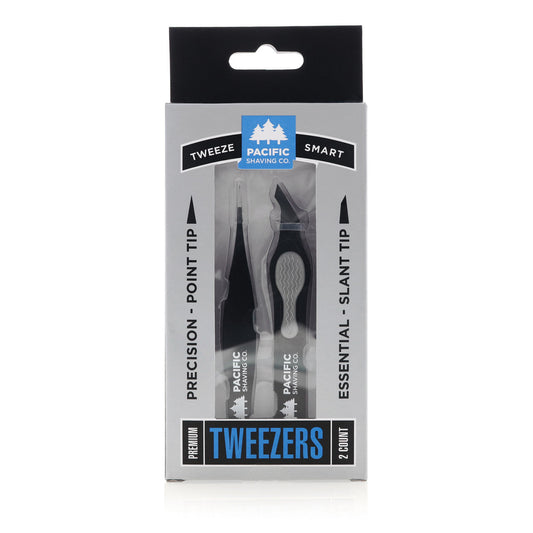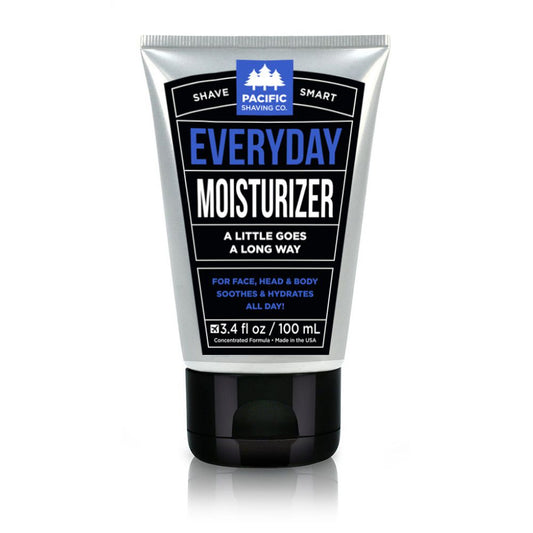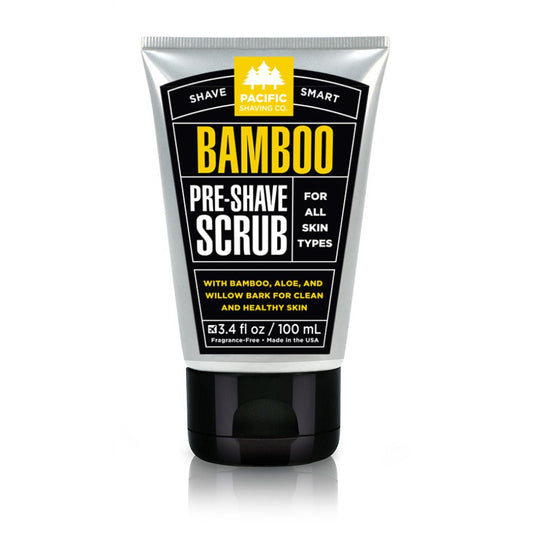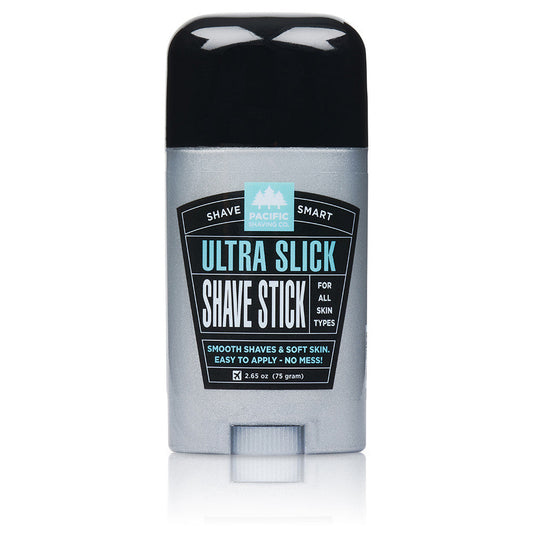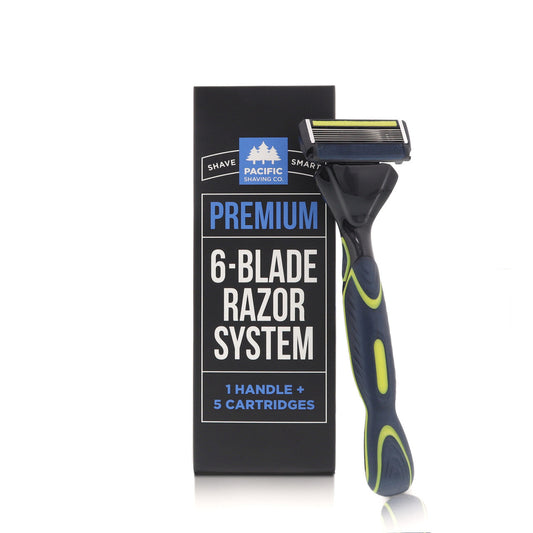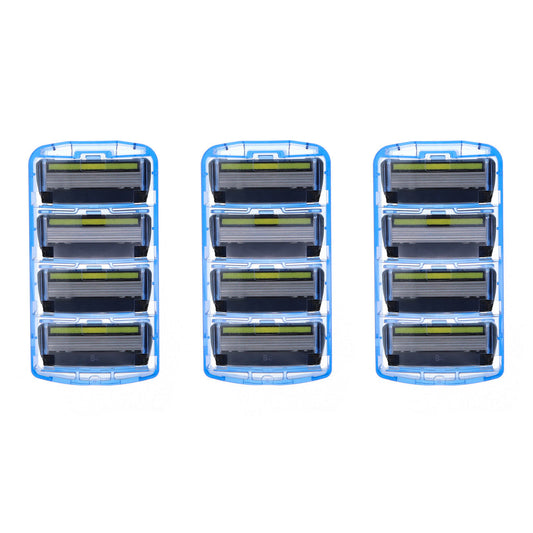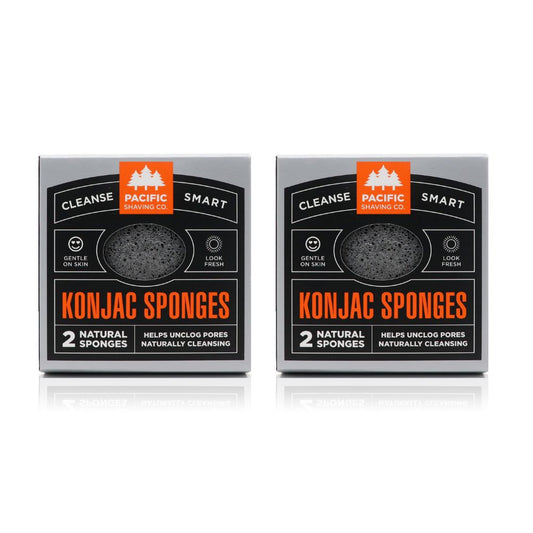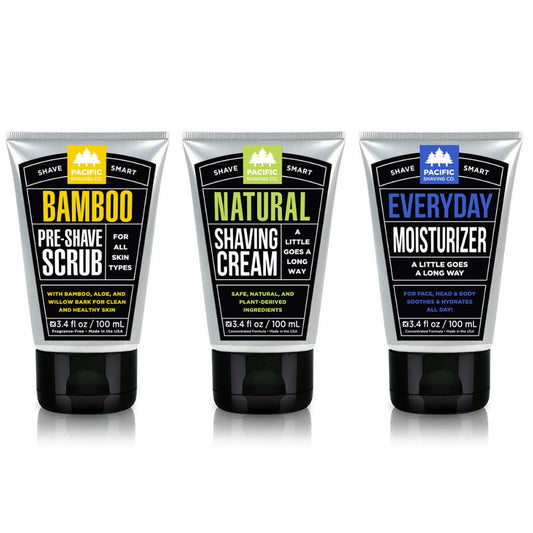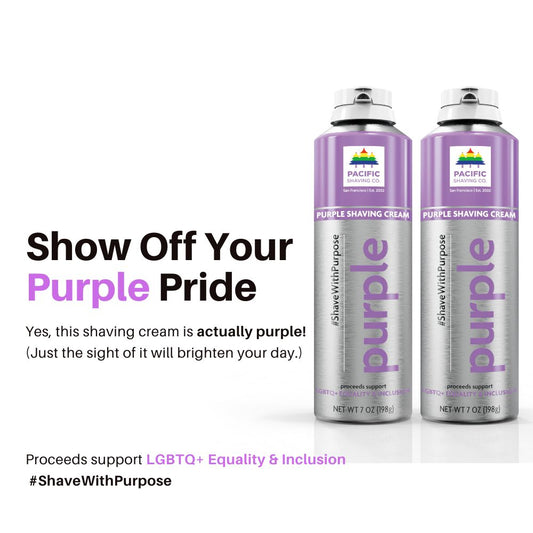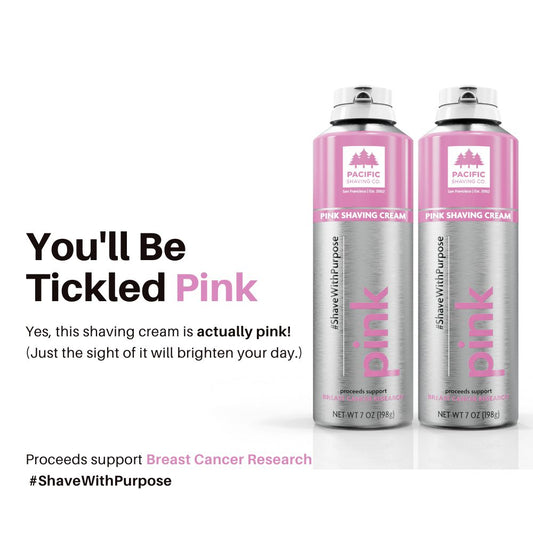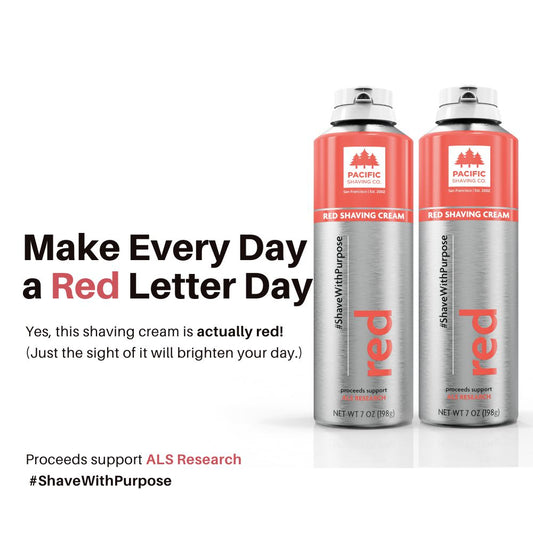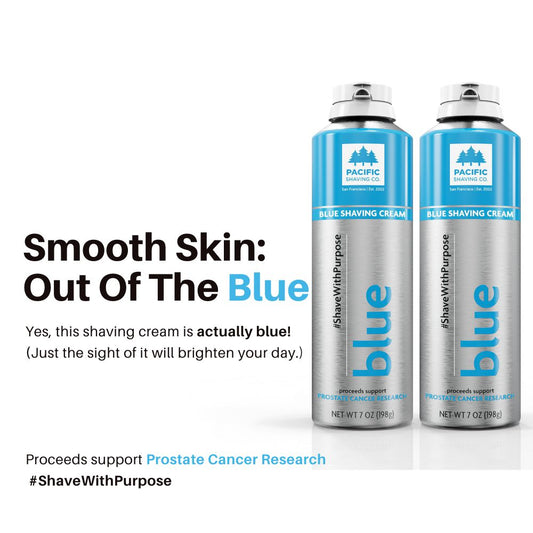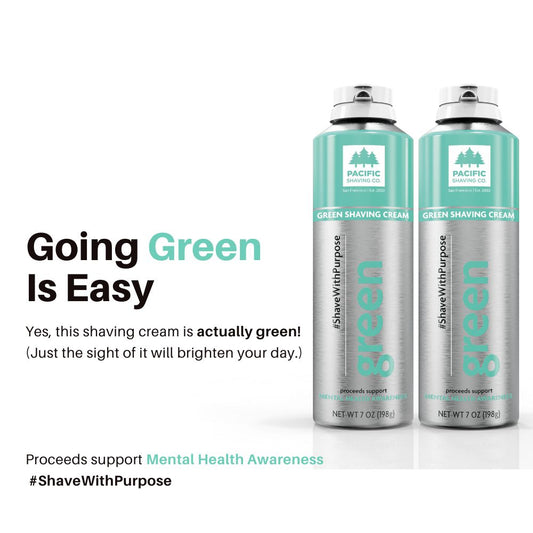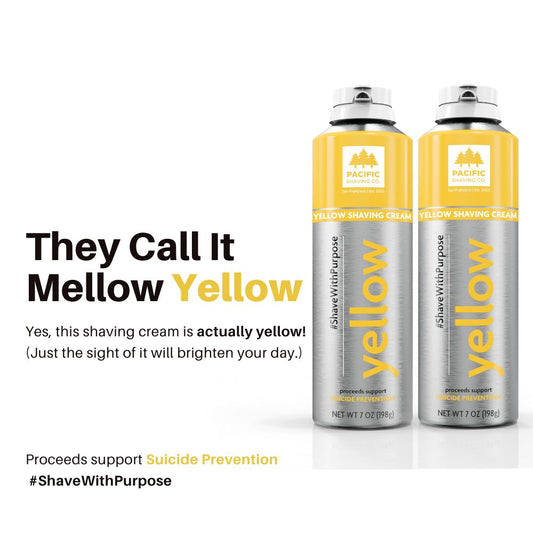When you're about to shave for the first time, you might have a lot of questions like 'Where do I start?' or 'How can I avoid nicking myself?' Don't worry. This guide is here to give you clear, step-by-step advice for a shaving experience that's free from trouble. You'll learn how to get your skin ready, pick the right tools, and master techniques for a shave that's smooth and free from irritation.
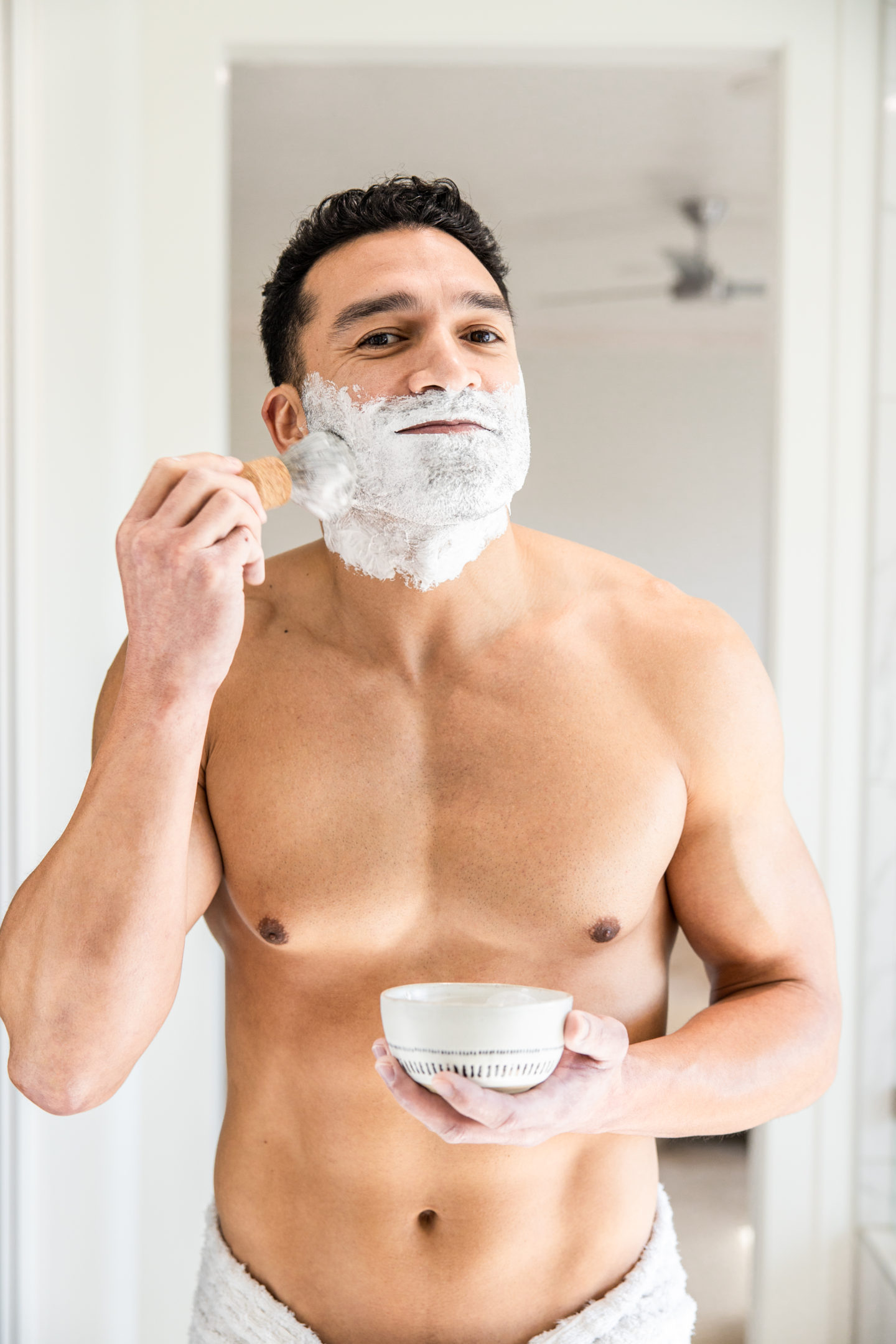
Key Takeaways
- Decide to start shaving based on your own comfort and when you notice hair growth, not because of pressure from friends or media — there's no specific age or time that's perfect for everyone.
- Prepare your skin for shaving with a gentle cleanser and warm water to make the hair softer, which helps prevent nicks and razor burn.
- Select the appropriate shaving tools that suit your skin and hair type, use the correct technique, and take care of your skin after shaving to maintain smoothness.
Deciding When to Start Shaving
The choice to begin shaving is highly individual, reflecting each person's unique path. Many people start to shave during adolescence when body and facial hair become more prominent. However, the timing is also influenced by personal comfort, cultural norms, and societal pressures.
For instance, those who are at ease with the idea of shaving, especially those experiencing dense and coarse hair growth early on, might choose to start earlier. Remember, this experience is personal to each individual, and there is no universally prescribed moment to take up shaving.
Recognizing Hair Growth Patterns
Understanding your unique hair growth patterns, including body hair and facial hair, can make your shaving experience easier and more effective. Typically, the first facial hair grow starts on the sides of the upper lip during puberty and gradually spreads across the whole upper lip. The direction of hair growth can also differ on different parts of your face.
For instance, hair on the upper cheek might grow in an angle or circular pattern, while chin hair usually grows straight down.
Choosing to Shave: A Personal Decision
Deciding to start shaving is a choice that should be made based on your own readiness and comfort level, not because of outside pressure. There's no specific time that's considered 'correct' for everyone to begin shaving.
It's about your personal journey, not a competition with others.
Preparing Your Skin for Its First Shave
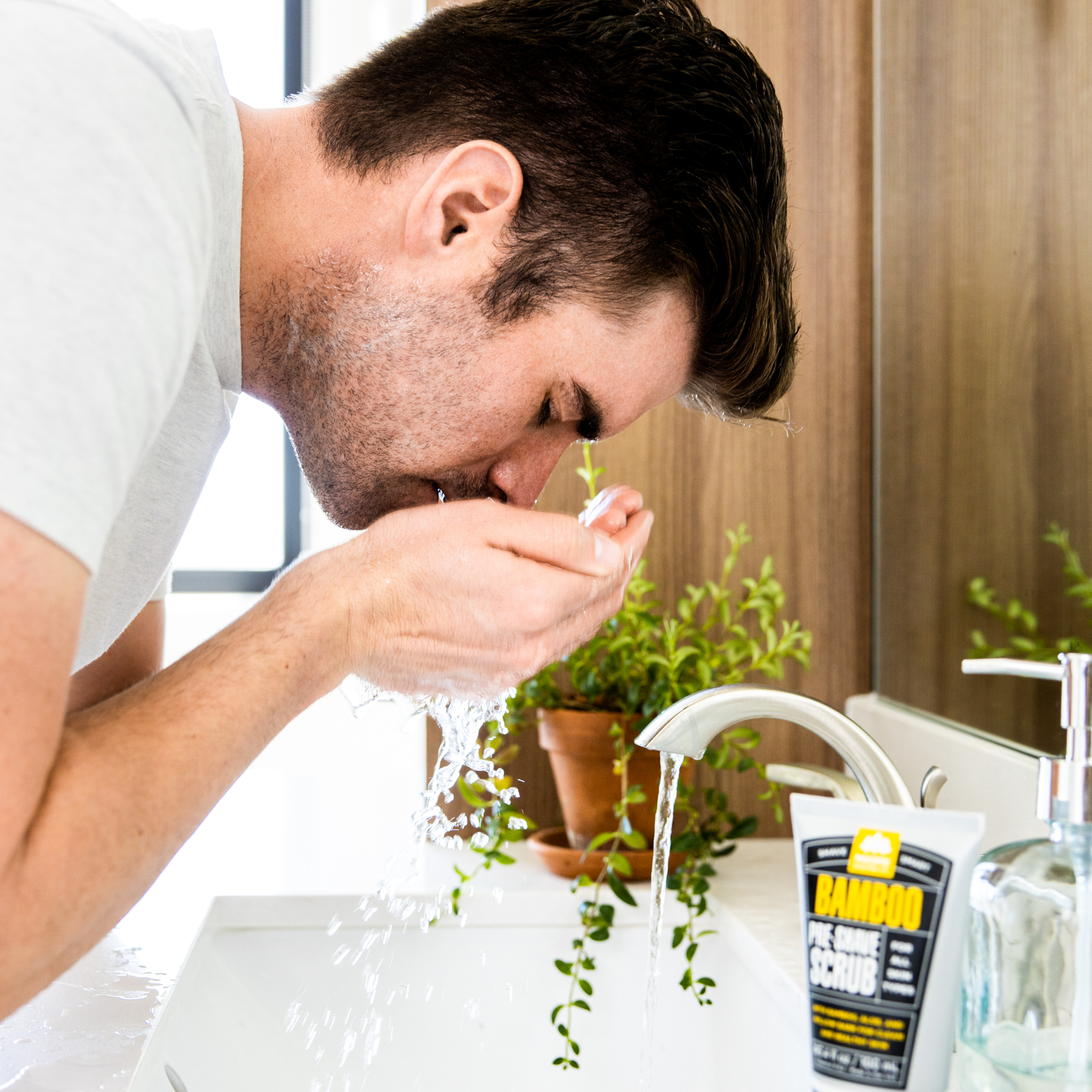
Before you even think about shaving, it’s crucial to get your skin ready. Think of it like an artist who needs a clean and smooth canvas to create a masterpiece. To avoid any pesky cuts or razor burn, a well-prepped face is key.
Start off by cleansing your skin with a gentle face wash. This will help to get rid of any dirt, oil, and dead skin cells that could block your razor and mess up your shave. After your face is clean, it’s time to make those hairs easier to cut by softening them up. You can do this by splashing your face with warm water or pressing a warm, damp towel against your skin for a couple of minutes. Soft hair and open pores will make for a much more comfortable shave.
Cleansing with a Gentle Cleanser
Before you shave, it's crucial to clean your skin. This step clears away dirt, oil, and dead skin that could mess with your razor's glide and might lead to skin problems like razor bumps. Use a mild cleanser to avoid irritating your skin or causing ingrown hairs.
Some cleansers that are gentle and effective include Cetaphil, Proraso Pre-Shave Cream with Aloe & Vitamin E, and Jack Black Deep Dive Glycolic Facial Cleanser. These products cleanse your skin thoroughly without stripping away its natural moisture, setting the stage for a better shaving experience.
Softening Hair Follicles
Softening the hair on your face is a key part of preparing to shave. Softer hair is easier to trim, leading to a more comfortable shave with less chance of irritation. You can soften your hair simply by washing your face with warm water or by laying a warm, damp towel over your face for a few minutes.
This step not only makes the hair easier to cut but also opens up your pores for a closer shave. It lifts the hairs slightly, which helps prevent ingrown hairs and makes your shaving experience smoother.
Selecting the Right Shaving Products

Choosing the right shaving products is essential for a smooth and comfortable shaving experience. The correct products can provide a closer shave, minimize irritation, and leave your skin feeling soft and supple. Each item, from the razor to the shaving cream or gel, plays an integral role in ensuring your shave is straightforward and trouble-free.
Choosing Your First Razor
The razor is the star of your shaving routine, so picking the right one is crucial. When looking for a razor, think about its sharpness, the number of blades it has, and how it fits the contours of your face.
For those new to shaving, a single-blade razor might be the best option because it's less likely to irritate your skin. The Gillette SkinGuard Sensitive is a solid choice, especially for its features that are designed to minimize skin irritation. It comes with FlexBall technology, which allows the razor to pivot in multiple directions for a smoother shave, and it has a unique SkinGuard positioned between the blades to protect your skin.
Choosing Shaving Cream or Gel
Shaving cream or shaving gel is a further significant element within your shaving regimen. But what’s the difference? Shaving creams are fluffy and lather up, while shave gel is clear and light, foaming up when you rub them in, providing a cushiony shave.
When choosing a shaving cream or gel, look for products with safe, natural, and plant-derived ingredients, such as those offered by Pacific Shaving Company. These products will help ensure your skin is well-protected and nourished during your shave.
Step-by-Step Shaving Guide
Begin by applying a good amount of shaving cream or gel to your wet face. If you're using a brush, whip it around in a mug or bowl to work up a rich foam. This step is crucial for a smooth glide of the razor across your skin.
Next, it's time to shave. Go slow, and shave in the direction your hair grows to avoid irritation. Focus on smaller sections to ensure you don't miss a spot and to keep things comfortable. Remember, it's about steady, even strokes.
After you've finished shaving, follow these steps:
- Reapply the lather and let it sit while you clean your shaving brush and any other tools you used.
- Rinse off most of the shaving cream with warm water.
- Gently dry your face with a towel.
How to Apply Shaving Cream for a Good Lather
Applying your shaving cream or gel properly sets the stage for a great shave. Here's how to do it:
- Splash your face with water and dab on a small amount of shaving cream or gel.
- Use a brush to quickly whip up a lather.
- Aim for a thick, creamy foam that covers your face well.
Perfecting Your Shave Technique
To get the hang of the ideal shave, it's all about the technique. Use a light touch and short strokes, holding the razor at about a 30-degree angle to your face. This helps you cover all areas and ensures the blade makes proper contact with your skin.
Always shave in the direction your hair naturally grows, known as "with the grain," to minimize the chance of skin irritation or razor bumps.
The Importance of Rinsing and After-Shave Care
The steps you take after shaving are just as critical as the shave itself. Start by rinsing your face with cool water to get rid of any leftover shaving cream and to close your pores, which soothes the skin.
If you happen to get any small cuts, a product like Pacific Shaving Company’s Nick Stick, which is a roll-on treatment, can be a real skin-saver. It's designed to calm irritation and quickly heal any minor shaving wounds.
Post-Shave Skincare: Achieving Smoothness and Hydration
Once your shave is complete, it's important to keep up with your skincare routine. Proper aftercare is essential for keeping your skin in great shape. Follow these post-shave steps:
- Apply a moisturizer to rehydrate your skin, which may have lost moisture during the shaving process.
- Use a soothing aftershave balm or lotion to calm your skin and lessen any potential redness or irritation.
- Consider using a toner to adjust the pH of your skin back to normal, as it can be affected by shaving.
- Remember to apply sunscreen if you're going outside—protecting your skin from UV damage is always crucial.
By taking these actions, you can help your skin remain smooth, healthy, and comfortable after shaving.
These aftercare practices can also help deal with common shaving issues like razor burn or ingrown hairs. An aftershave lotion that soothes can close up pores and provide a protective layer, which helps heal any small nicks or cuts from shaving.
Hydrating Your Skin Post-Shave
Moisturizing is a crucial step in your post-shaving routine. It replenishes your skin's moisture, which can be lost during shaving, helping to prevent dryness, flakiness, or irritation. It also keeps your skin feeling soft and looking healthy.
When picking a moisturizer, opt for ones that contain safe, natural, and plant-based ingredients, like those from Pacific Shaving Company. These kinds of products are gentle on the skin and provide the necessary hydration to make your post-shave experience not only comfortable but also beneficial for your skin's health.
Dealing with Shaving Problems
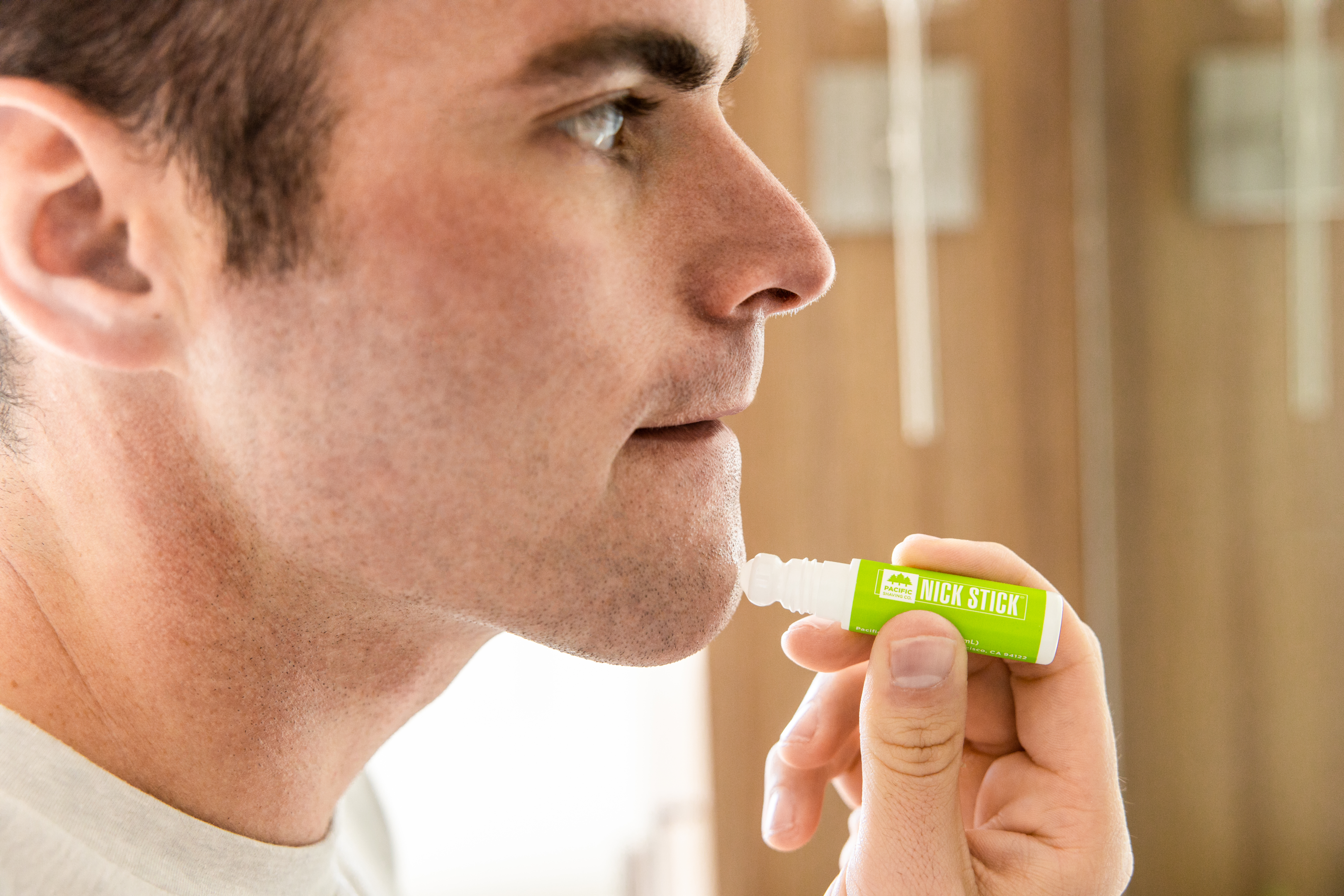
After you shave, you might run into some annoying issues like skin irritation, itching, small cuts, razor burn, or hairs that grow back into the skin. Don't worry, these are common and there are straightforward solutions. To soothe razor burn, you can use natural remedies like tea tree oil, apple cider vinegar, or a paste of baking soda and water.
Avoiding ingrown hairs is about shaving the right way and taking care of your skin. Here's what you should do:
- Shave in the same direction that your hair grows, and don't stretch your skin while you shave.
- Put on moisturizer after you shave to keep your skin from drying out.
- Exfoliate your skin regularly to stop hairs from curling back into your skin.
Stick to these tips to help keep ingrown hairs away.
Considering an Electric Razor for Convenience
For beginners, an electric razor could be a practical choice for your initial shave. Electric razors are designed to make shaving easy and convenient, especially for those who are new to the shaving game. They offer a number of benefits such as safety, precision trimming, and even waterproof features for those who prefer to shave in the shower.
Electric razors are particularly beneficial for those with sensitive skin as they are designed to be gentler on the skin, reducing the chance of irritation and razor burn.
Benefits of Electric Razors
There are many benefits to using an electric razor, especially if you're shaving for the first time. The biggest advantage is safety. Electric razors are designed to trim hair without the blades directly touching your skin, which greatly lowers the chance of getting cuts.
Another plus is that electric razors often come with special attachments for precision trimming. This means you can neatly shape your sideburns or clean up your mustache with ease, giving you more control over your look.
Recommended Electric Razors
If you're thinking about using an electric razor for your first shave, the Braun Series 9 is a top-notch option. It's user-friendly and delivers a close shave without the risk of razor burn, which is great for beginners.
Other electric razors that are good for new shavers include the Panasonic Arc 4, Philips Norelco OneBlade First Shave Electric Shaver, and the Panasonic Arc5 LV95. These models are designed for simplicity and come with features that help first-time users.
How to Keep Your Shaving Tools in Top Shape
Taking care of your shaving equipment is crucial for a great shave and to keep everything clean. By cleaning your tools regularly and storing them correctly, you can make them last longer and avoid any skin problems caused by bacteria.
For your razor blades, it's important to get new ones after you've used them for about 5 to 7 shaves. This helps make sure each shave is smooth and effective. If you're using an electric shaver, plan to change the cutting parts once every year.
Cleaning Your Razor Properly
To keep your razor working well and germ-free, you should clean it after every shave. Just run it under warm water to wash away hair, dead skin, and leftover shaving cream. For a deeper clean, you can soak your razor in rubbing alcohol, white vinegar, or hydrogen peroxide to remove any stubborn debris.
When it comes to storing your razor, find a place that’s cool and dry to avoid rust. If your razor came with a holder, use it to let your razor air-dry away from moisture. This will help your razor stay in good condition for a longer time.
When to Buy Fresh Blades
It's essential to swap out your razor blades regularly to ensure your shave is smooth and effective. Generally, you should change your blades after every five to ten uses, but this might vary based on how thick and coarse your hair is.
Here's how you can tell your razor blade isn't sharp anymore:
- Your skin feels irritated after shaving
- You see uneven patches where hair wasn't cut properly
- Your skin doesn't feel smooth to the touch
- Shaving feels harder because the razor doesn't glide easily
If you notice any of these signs, it’s time to replace your dull or blunt blade.
Summary
Wrapping up, learning the ropes of shaving is a unique experience for everyone. There's no universal method that works for everyone. It's important to understand the distinct patterns in which your hair grows, to carefully choose the best shaving products, and to get the hang of the actual shaving technique. Each of these steps is key to achieving a shave that's both smooth to the touch and gentle on your skin. Keep in mind that prepping your skin before you shave, creating a rich lather, and taking care of your skin after shaving are all essential parts of the process. So, take it slow, find enjoyment in learning, and welcome to the grooming club!
FAQs for Shaving Newbies
What's the best approach for a novice shaver?
If you're new to shaving, it's wise to take it easy. Use unhurried, short strokes that go along with the direction your hair grows. Don't press too hard—just enough to cut the hair without harming your skin. With a bit of practice, you'll become more adept at it.
Steps to take for your inaugural shave?
Embarking on your first shave? Make sure your skin is well-hydrated, lather up with a generous amount of shaving gel, and pick a suitable razor. Exfoliate and moisturize before you begin to prep your skin, and you might want to try an electric razor for a simpler start. Here's to a successful first shave!
At what age do most people start shaving?
While there's no set age for everyone, most people begin shaving between the ages of 14 and 17. Some may start earlier, around 12, while others might wait until their later teenage years.
Deciding the Right Time to Begin Shaving
Initiating the habit of shaving often coincides with the changes of puberty, as body and facial hair start to appear. However, the decision is subjective and should align with your own readiness, as well as the cultural and social standards you might encounter. There's no rush—begin when you feel it's right for you.
Steps to Ready Your Skin for Shaving
Before you shave, it's crucial to cleanse your skin to eliminate any buildup of dirt and oils. Use a mild cleanser suited for your skin type. Following that, soften your hair by washing with warm water or placing a warm, damp towel on the area you plan to shave. These steps help ensure a smoother shaving experience and minimize the chance of skin irritation.
How often should I change my razor blade?
It's recommended to change your razor blade after every 5 to 7 shaves to ensure a clean cut and minimize irritation. However, this can vary depending on the coarseness of your hair and the frequency of your shaves. If you notice the blade pulling at your hair or causing discomfort, it's time for a new one.
Can shaving make my hair grow back thicker or darker?
No, shaving does not change the thickness, color, or rate of hair growth. This is a common myth. Hair may appear darker or thicker after shaving because the blunt tip of the regrown hair is more noticeable than the naturally tapered end of the hair.
What should I do if I cut myself while shaving?
If you accidentally cut yourself, calmly wash the area with cool water and press on it with a clean tissue or cloth to stop the bleeding. For those small nicks, Pacific Shaving Company's Nick Stick is your best bet. It's super easy to use, won't give you that sting other products might, and it's invisible once it dries. Plus, it's good at fighting off germs to keep infections at bay. Always remember to keep your razor clean to lower the chance of any nasty germs getting into your cuts.
Is it better to shave before or after a shower?
Shaving after a shower is generally better as the warm water and steam soften your hair and open up the pores, making for a closer and more comfortable shave. However, if you prefer to shave before showering, make sure to at least wash your face with warm water to prepare your skin and hair for shaving.


